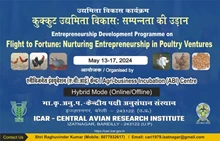
The FSSAI, India's food standards regulatory authority, has advised food vendors and consumers to stop using newspapers for food packaging and storage due to serious health concerns. They are working closely with state food authorities to enforce this regulation. The CEO of FSSAI, G Kamala Vardhana Rao, has strongly urged people nationwide to immediately cease using newspapers for these food-related purposes.
Is paper ink harmful?
Food that has been tainted by newspaper ink can pose significant health risks due to the presence of various bioactive substances known to have adverse health impacts. Printing inks encompass detrimental dyes, pigments, binders, additives, and preservatives.
Is newspaper ink still toxic?
Printing employs both black and colored inks. Studies indicate that traditional newspaper inks, particularly those utilizing petroleum-based ink with a significant presence of Volatile Organic Compounds (VOCs), are recognized as hazardous and unsafe. However, contemporary newspaper printing now incorporates modern inks derived from soybeans, water, or waxes, which are considered safer alternatives.
What are the health risks involved?
Using newspaper ink as a food packaging material is not recommended, as it poses several health risks. Newspaper ink is not designed or tested for direct food contact, and it can contain potentially harmful substances. Here are some of the health risks associated with using newspaper ink for food packaging:
-
Chemical Contaminants: Newspaper ink can contain various chemicals, such as heavy metals, solvents, and petroleum-based compounds. These substances may leach into the food and pose health risks when ingested.
-
Toxic Components: Some newspaper inks may contain toxic components like lead, cadmium, and other heavy metals. Exposure to these metals can lead to serious health problems, especially when consumed over time.
-
Microbial Contamination: Newspaper can be contaminated with bacteria, fungi, and other microorganisms. Using it as a food wrapper can introduce these pathogens to the food, increasing the risk of foodborne illnesses.
-
Allergenic Reactions: Certain individuals may be allergic to components in newspaper ink, which can lead to allergic reactions when they consume food that has come into contact with the ink.
-
Unknown Ingredients: The composition of newspaper ink can vary from one publication to another, making it difficult to know exactly what chemicals and substances are present in the ink. This uncertainty raises concerns about potential health risks.
-
Transfer of Harmful Substances: Over time, the ink on newspaper can deteriorate or transfer to the food, especially when exposed to moisture or heat. This can result in the ingestion of ink particles or chemicals.
Therefore, the FSSAI has called upon consumers, food sellers, and stakeholders nationwide to promptly cease the practice of using newspapers as food packaging and instead advised the adoption of secure and authorized food packaging materials and containers that meet food-grade standards. This is to ensure the safety and health of consumers.
#FSSAI (Food Safety & Standards Authority of India) has urged consumers and food vendors to stop using #newspapers for packing, serving & storing food items. There is a huge health risk involved as ink used in newspapers contain bioactive materials with negative health effects! pic.twitter.com/4yjMJ161nd
— Sreedhar Pillai (@sri50) September 28, 2023











